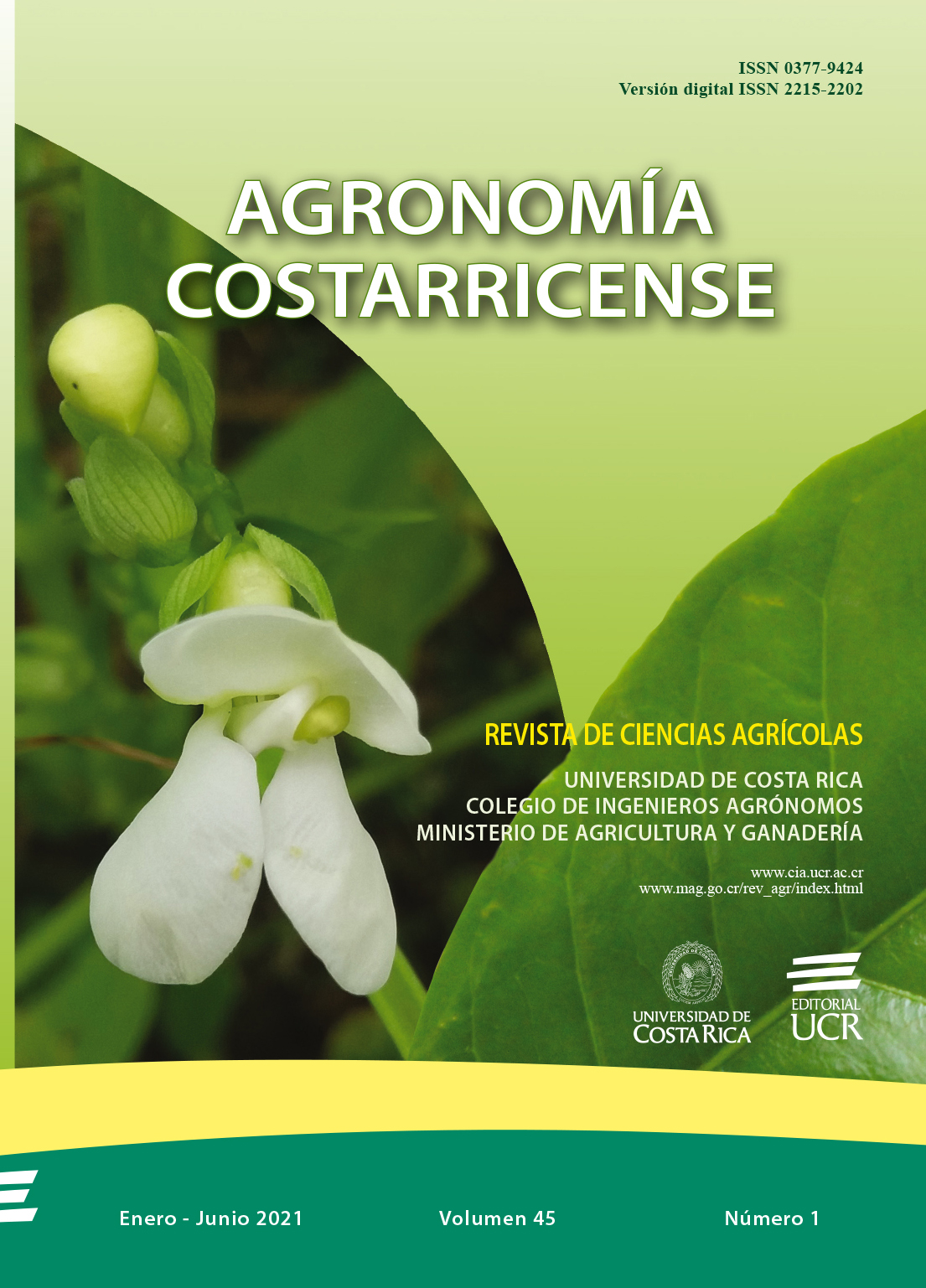Abstract
Introduction. The cocoa production system contributes to the sustainability of soil management, through the recycling of nutrients along with leaf litter production. Objective. To estimate the contribution of biomass and nutrients in cocoa plantations under the effects of chemical and organic fertilization. Materials and methods. In SAF with cocoa-CCN-51 (Theobroma cacao L.) associated to matarratón (Gliricia sepium L.) in Rionegro (Santander), it was evaluated the effect of 4 fertilization sources on the production of leaf litter (kg.ha-1 MS) and contribution of essential nutrients N, P, K, Ca, Mg (kg.ha-1). A complete randomized block design with 3 repetitions was used with these treatments: T1-Conventional, T2-Chemical, T3-Ecocacao and T4-Organic+Chemical. Fertilization was carried out during 3 years. The contribution of leaf litter and nutrients was evaluated the last year (2012), through collecting traps sampled monthly and analyzed in 2 times of the year: low rainfall (BP: January-February) and high rainfall (AP: July-December). The contribution of nutrients was calculated through the content of N, P, K, Ca, Mg determined in the laboratory with the leaf litter production per ha. Results. The highest contribution of leaf litter was occurred in the period of high rainfall for the treatments T3-Ecocacao and T2-Chemical with 567,2 and 541,33 kg.ha-1 MS, respectively. The seasonal variation by time of year had influenced signifivatively the contribution of N, P, K, Ca and Mg present in cocoa leaf litter. It was observed that in 80% of the cases a greater contribution of nutrients occurred in B.P season. The T3-ecocoa stood out for its contribution of N, Ca and Mg nutrients (8,11-7,74 and 1,02 kg.ha-1. year-1 respectively). Conclusion. In Rionegro- Santander, the greatest contribution of leaf litter was carried out by the T3-Ecocacao with 992.11 kg.ha-1.year-1 MS, that represented a 70% higher monetary value (in terms of commercial fertilizer cost) with respect to T1-conventional.


